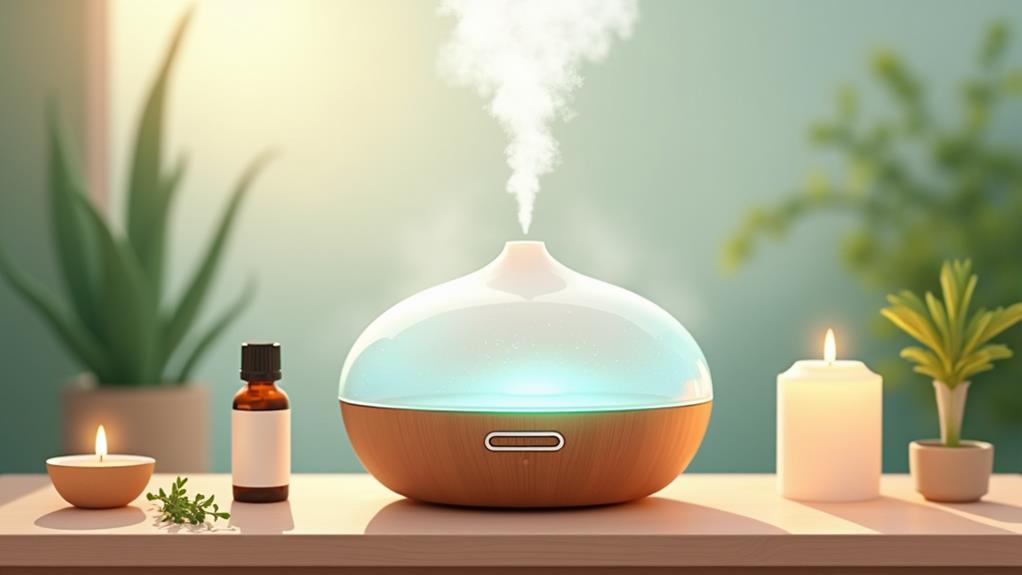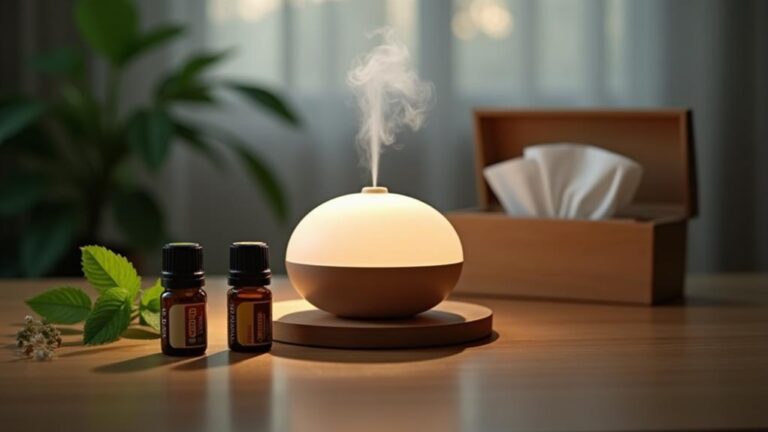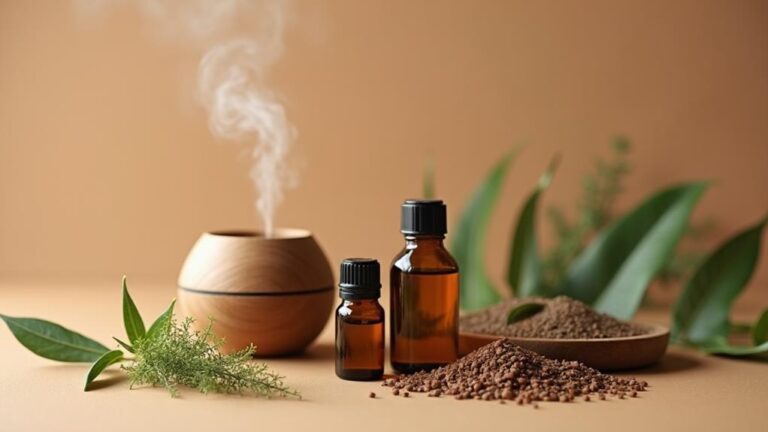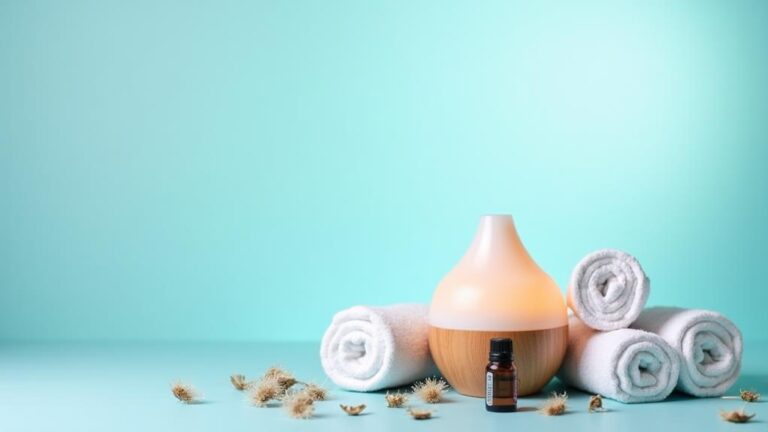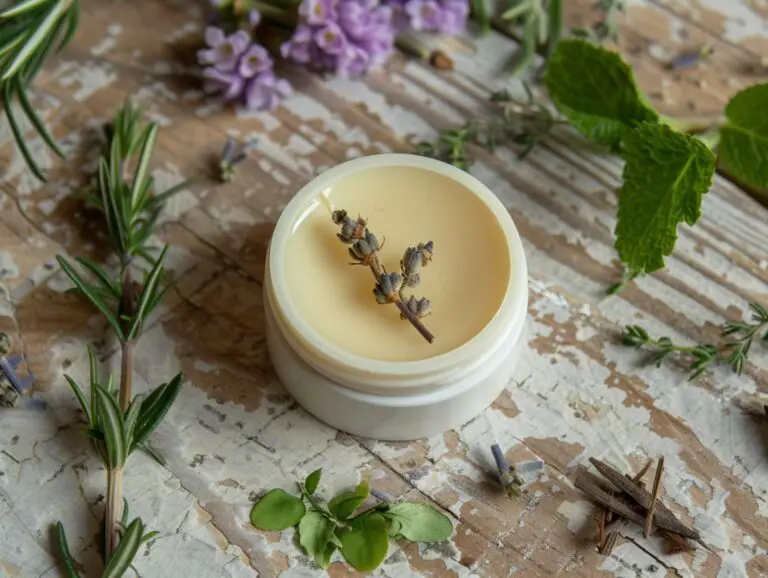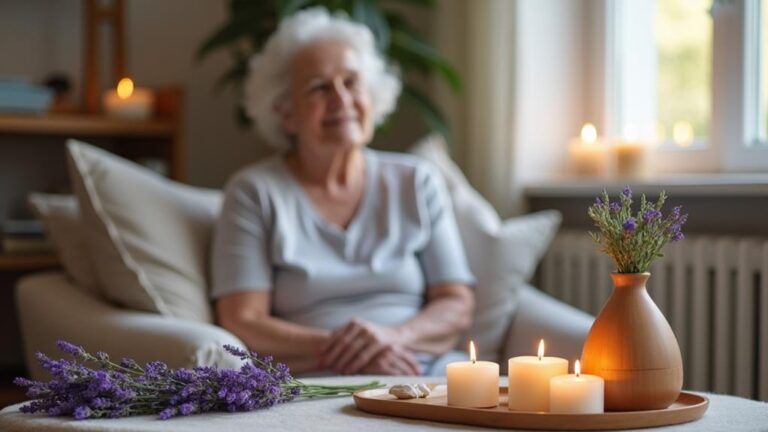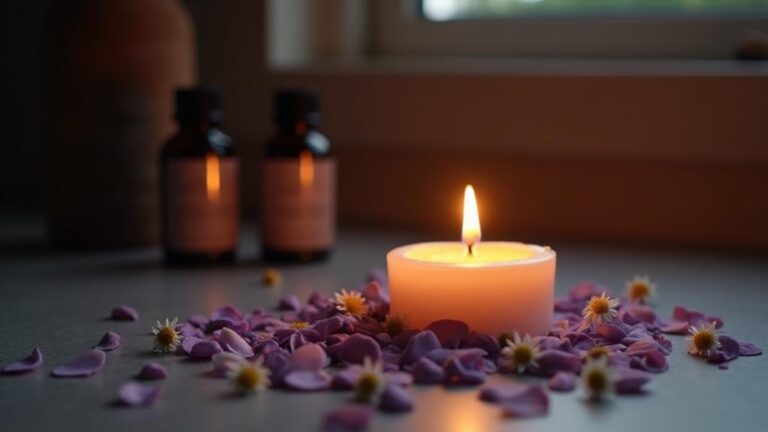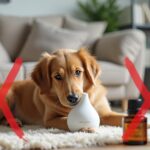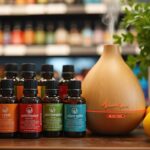You might think that aromatherapy diffusers are just fancy humidifiers, but they’re actually sophisticated devices that can have a profound impact on your physical and emotional well-being. By breaking down essential oils into tiny molecules, they release a fine mist that’s easily absorbed by your body, triggering responses that reduce stress and anxiety, alleviate pain, and promote emotional balance. But what’s really going on inside these devices? How do they manage to transform a few drops of oil into a therapeutic atmosphere? Let’s take a closer look at the science behind aromatherapy diffusers to uncover their secrets.
Key Takeaways
- Ultrasonic technology creates a fine mist from water and essential oils, releasing a gentle fragrance into the air.
- Nebulizing diffusers use compressed air to break essential oils into particles, creating a strong, concentrated scent.
- Aromatherapy diffusers work by breaking down essential oil particles into microscopic droplets that merge with air molecules to form a therapeutic mist.
- The ideal droplet size for aromatherapy is between 0.5-5 microns, allowing for maximum absorption and effectiveness.
- Diffuser type, oil quality, pressure, and humidity affect the size and stability of airborne droplets and the overall efficacy of aromatherapy.
The Science Behind Aromatherapy
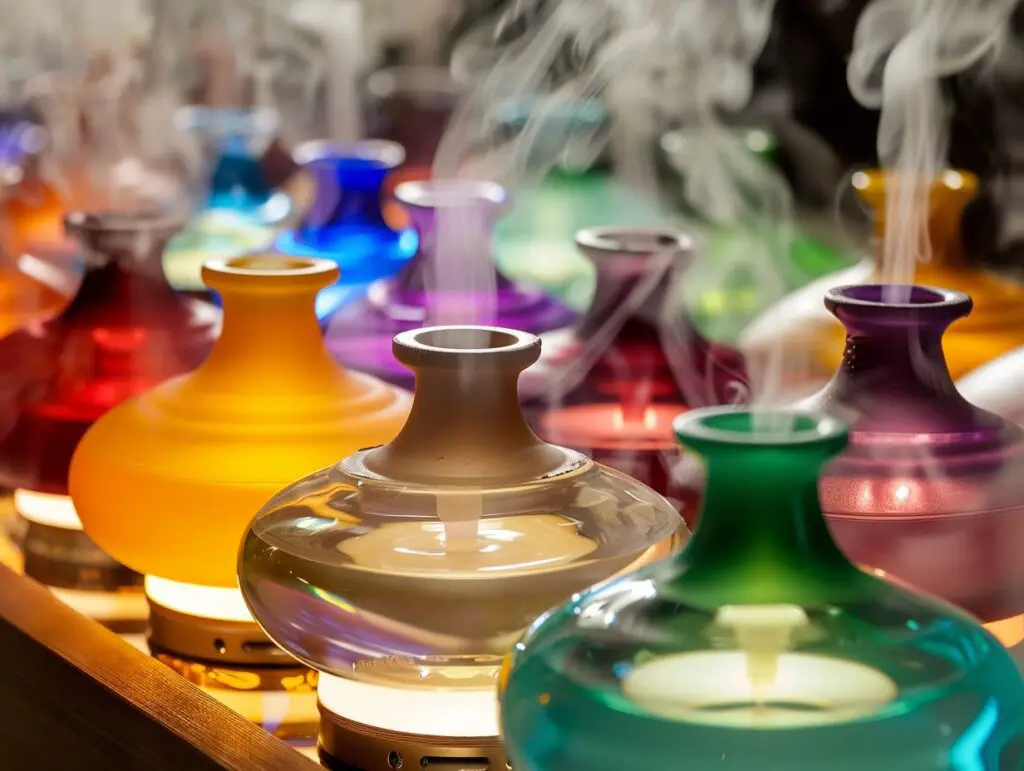
Many centuries of documented use have established aromatherapy as a legitimate holistic practice, yet its scientific underpinnings remain somewhat mysterious.
You may wonder how something as simple as inhaling essential oils can have such a profound impact on your physical and emotional well-being.
The answer lies in the way aromatherapy interacts with your body’s chemistry. When you inhale essential oils, they’re absorbed into your bloodstream through your lungs, where they can influence your brain’s limbic system, which regulates emotions, mood, and memory.
This interaction triggers a range of physiological responses, from reducing stress and anxiety to alleviating pain and inflammation.
The aromatherapy benefits are vast, with therapeutic applications extending to skin care, respiratory health, and even mental health conditions like depression.
How Essential Oils Are Broken Down
As you explore the world of aromatherapy, understanding how essential oils are broken down is essential to harnessing their therapeutic potential.
When you add essential oils to a diffuser, they don’t simply evaporate into the air. Instead, they need to be broken down into tiny molecules that can be easily inhaled and absorbed by the body. This process relies on the essential oil solubility, which is the ability of the oil to dissolve in a solvent.
In the case of aromatherapy diffusers, the solvent is typically water or air. The oil solvent properties of the essential oil determine how easily it can be broken down and dispersed into the air.
Some essential oils, like lavender, have high solubility and can easily dissolve in water, while others, like sandalwood, have low solubility and require more force to break down. Understanding the solubility and solvent properties of essential oils is pivotal to choosing the right diffuser and ensuring that you’re getting the most therapeutic benefits from your essential oils.
Ultrasonic Technology Explained
When you’re considering an aromatherapy diffuser, you’ll likely come across ultrasonic technology as a key feature.
This technology uses high-frequency sound waves to create a fine mist from the water and essential oils, releasing a gentle, consistent fragrance into the air.
Ultrasonic diffusers are popular due to their ease of use, low maintenance, and ability to preserve the therapeutic properties of essential oils.
Here’s how ultrasonic technology works in aromatherapy diffusers:
- Water and oil mixture: You add water and a few drops of essential oil to the diffuser.
- Ultrasonic vibration: The diffuser’s ultrasonic transducer creates high-frequency sound waves (typically above 20 kHz) that vibrates the water and oil mixture.
- Mist creation: The vibration creates a fine mist that’s released into the air as a gentle, consistent fragrance.
- Easy maintenance: Ultrasonic solutions require minimal diffuser maintenance, as the mist creation process doesn’t involve heat, which can damage the diffuser or alter the oil’s properties.
Heat-Free Diffusion Method
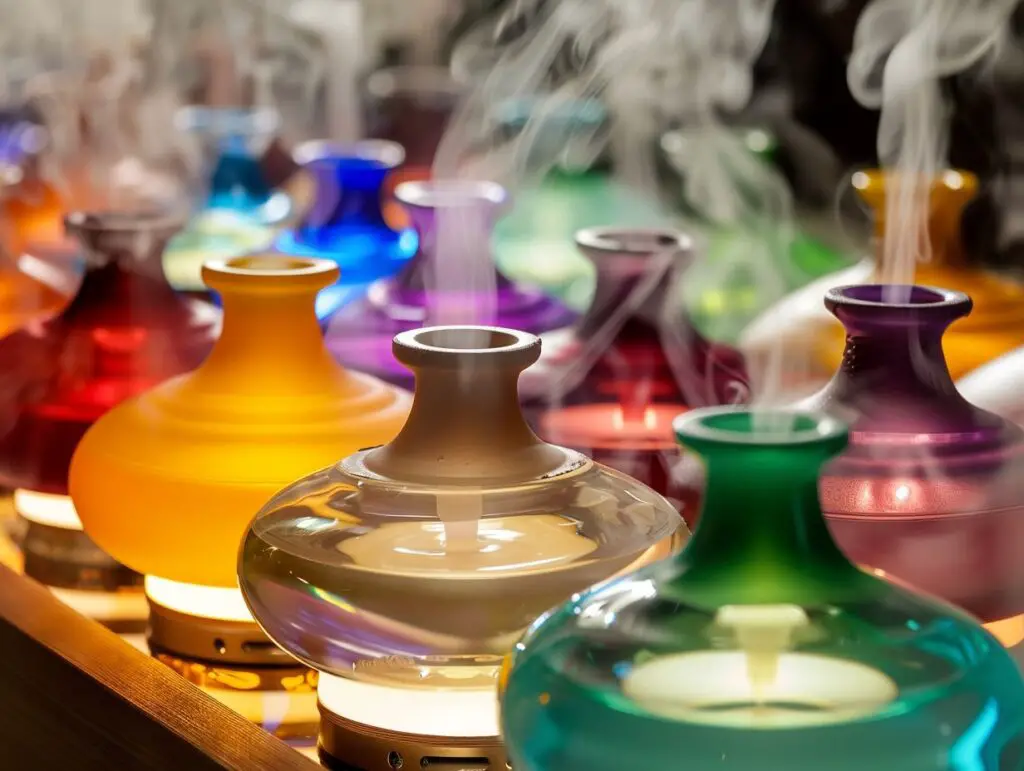
You’ve just learned how ultrasonic technology works in aromatherapy diffusers, but there’s another important aspect to take into account: the heat-free diffusion method. This method guarantees that the essential oils’ therapeutic properties aren’t compromised during the diffusion process.
Unlike traditional heat-based methods, heat-free diffusion prevents the oils from being altered or denatured, preserving their potency and effectiveness. In this method, the essential oils are mixed with water and then released into the air as a cold mist, without any heat involvement.
This cold misting process allows the oils to maintain their natural composition and aroma, providing a more authentic aromatherapy experience.
The heat-free diffusion method also enables a gentle emission of the oil particles into the air. This gentle emission confirms that the oils are dispersed evenly and consistently, creating a subtle yet effective aroma that promotes relaxation and well-being.
Nebulizing Vs Ultrasonic Diffusers
Most aromatherapy enthusiasts find themselves torn between two popular diffusion methods: nebulizing and ultrasonic diffusers.
You may have read Diffuser Reviews, wondering which one is best for you. Both methods have their strengths and weaknesses, and to weigh the pros and cons thoroughly, you must grasp the differences before making a decision.
Nebulizing diffusers use a jet of compressed air to break essential oils into tiny particles, creating a strong, concentrated scent.
On the other hand, ultrasonic diffusers use high-frequency sound waves to create a fine mist, dispersing the oil particles into the air.
Scent Strength: Nebulizing diffusers provide a more potent scent, while ultrasonic diffusers produce a milder aroma.
Oil Usage: Nebulizing diffusers consume more oil than ultrasonic diffusers, which can be more cost-effective.
Noise Level: Nebulizing diffusers can be noisier than ultrasonic diffusers, which are generally quieter.
Maintenance: Ultrasonic diffusers require more frequent cleaning to prevent bacterial growth, while nebulizing diffusers are relatively low-maintenance.
Ultimately, the choice between nebulizing and ultrasonic diffusers depends on your personal preferences and Scent Options.
Evaluate your needs and priorities before selecting the best diffuser for you.
Oil Particles and Airborne Droplets
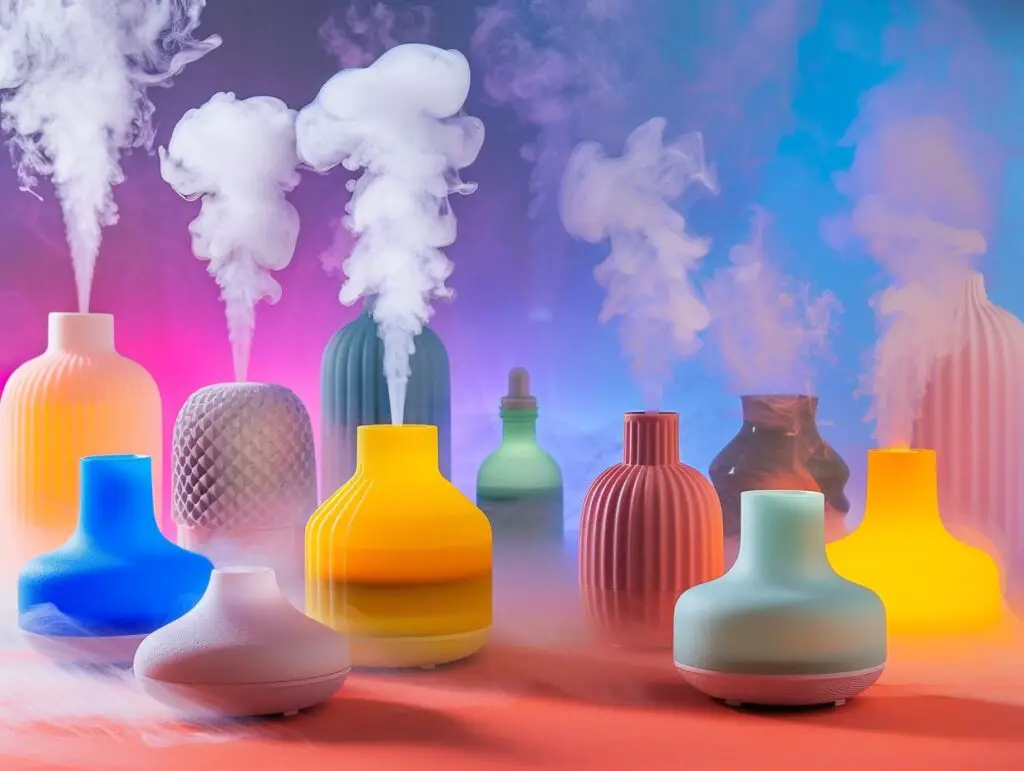
When you use an aromatherapy diffuser, you’re releasing oil particles into the air, which can have a profound impact on your health and wellness.
The size of these droplets matters, as smaller particles can travel deeper into your lungs, while larger ones may only reach the upper airways.
Droplet Size Matters
Beyond the domain of scent and sensation, the efficacy of aromatherapy diffusers hinges on a crucial, often overlooked factor: droplet size.
You see, when essential oils are broken down into smaller particles, they become more effective at interacting with your body and mind.
The ideal droplet size for aromatherapy is between 0.5-5 microns, allowing for maximum absorption and effectiveness.
To achieve this, you’ll want to weigh the following factors:
- Diffuser type: Ultrasonic and nebulizing diffusers are better suited for producing smaller droplets, while heat-based diffusers may produce larger droplets that can be less effective.
- Oil quality: High-quality oils with a lower viscosity tend to produce smaller droplets, while thicker oils may require more power to break them down.
- Pressure and flow rate: The pressure and flow rate of the diffuser can also impact droplet size, with higher pressures and flow rates often producing smaller droplets.
- Humidity and temperature: Environmental factors like humidity and temperature can affect droplet size, so it’s crucial to factor these in when using your diffuser.
Oil Particle Dispersion
As you venture into the domain of aromatherapy, you’re likely to encounter a critical aspect of oil dispersion: the intricate dance between oil particles and airborne droplets.
Oil particle dispersion is the process by which essential oils are broken down into tiny particles, allowing them to be effectively dispersed into the air.
This process is vital for the efficacy of aromatherapy, as it determines how well the oil’s active compounds are released and absorbed by the body.
The key factors influencing oil particle dispersion are oil concentration and particle size.
Oil concentration affects the number of particles released, while particle size determines how easily they’re absorbed by the body.
Smaller particles are more easily absorbed, resulting in a more intense aroma and therapeutic effect.
Aromatherapy diffusers use various methods to control particle size, such as ultrasonic vibrations or heat, to optimize oil dispersion.
Airborne Droplet Formation
Forming airborne droplets is a pivotal step in aromatherapy, where essential oil particles merge with air molecules to create a potent therapeutic mist.
As you use your aromatherapy diffuser, the device breaks down the essential oil particles into microscopic droplets, which then combine with air molecules to form an aerosol.
This aerosol creation is the key to effective aromatherapy, as it allows the therapeutic properties of the essential oils to be easily inhaled and absorbed by the body.
When you inhale this mist, the airborne droplets penetrate deep into your lungs, carrying the therapeutic benefits of the essential oils with them.
The droplet formation process is essential, as it determines the size and distribution of the oil particles in the air.
- Surface tension: The surface tension of the essential oil affects the size and stability of the droplets.
- Viscosity: The viscosity of the oil determines how easily it can be broken down into smaller droplets.
- Temperature: The temperature of the oil and air affects the rate of droplet formation and aerosol creation.
- Air pressure: The air pressure inside the diffuser influences the size and distribution of the droplets.
Humidifying the Air Naturally
When you use an aromatherapy diffuser, you’re not only releasing essential oils into the air, but you’re also creating a moisture-rich air environment that can help to soothe dry skin and sinuses.
This humidifying effect can be especially beneficial during dry winter months or in air-conditioned spaces.
As the diffuser releases a fine mist into the air, it also helps to facilitate the air purification process by trapping impurities and promoting a healthier breathing environment.
Moisture Rich Air
Humidifying the air naturally is essential for maintaining a healthy respiratory system, and aromatherapy diffusers can play a significant role in this process.
When you breathe in dry air, your respiratory system has to work harder to humidify the air, which can lead to discomfort and irritation.
Aromatherapy diffusers help to humidify the air by releasing a fine mist of water vapor into the air, creating a moisture-rich environment that’s beneficial for your health.
- Relieves respiratory issues: Humid air helps to soothe and calm irritated respiratory tracts, making it easier to breathe and reducing congestion.
- Hydrates the skin: Moisture-rich air helps to lock in moisture, leaving your skin feeling soft, supple, and hydrated.
- Reduces airborne bacteria: Humid air makes it harder for airborne bacteria to thrive, reducing the risk of illness and infection.
- Promotes better sleep: A humid environment can help you sleep more soundly and wake up feeling more refreshed and revitalized.
Air Purification Process
How do you envision air purification working in harmony with humidifying the air naturally?
As you breathe in, an aromatherapy diffuser‘s air purification process kicks in, removing pollutants and toxins from the air. This synergy enhances air quality, creating a healthier environment for you to thrive in.
The air purification process involves the diffuser’s advanced technology, which captures and removes pollutants, allergens, and bacteria from the air.
This process is vital, as indoor air can be up to five times more polluted than outdoor air. By removing these impurities, the diffuser improves air quality, reducing the risk of respiratory issues and other health problems.
As the diffuser humidifies the air naturally, it also facilitates pollutant removal.
This holistic approach guarantees that the air you breathe isn’t only clean but also rich in moisture, promoting a sense of well-being and relaxation.
Atomizing Essential Oils Efficiently
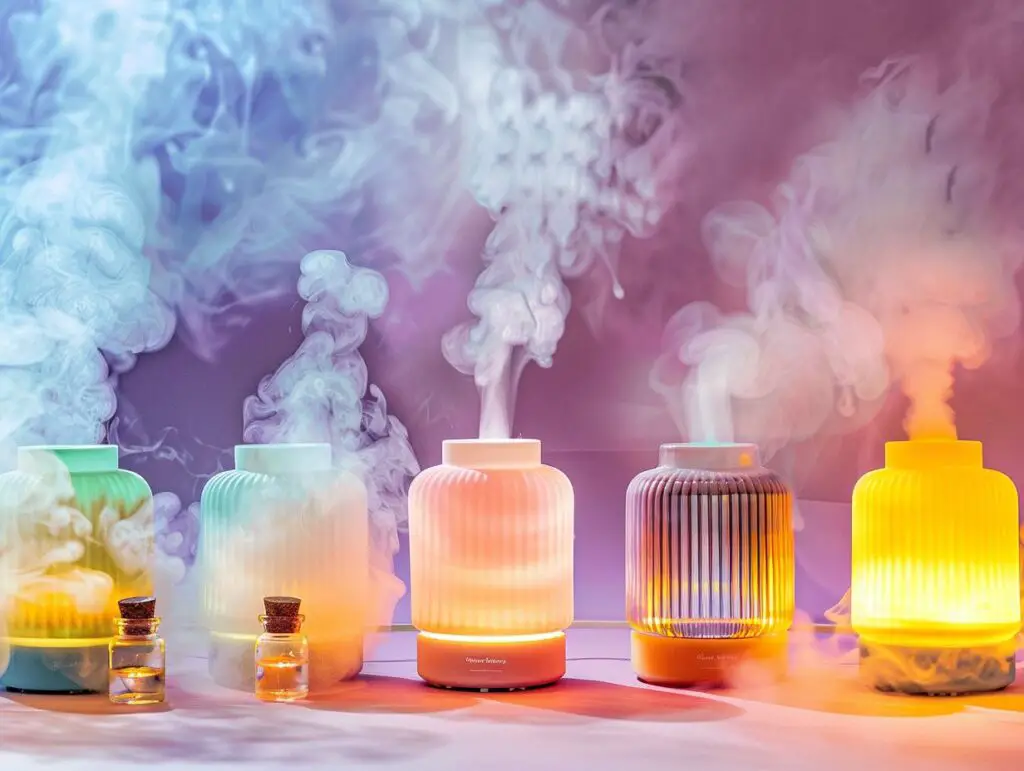
Through the strategic placement of tiny nozzles and precision-engineered jets, aromatherapy diffusers atomize essential oils efficiently, breaking them down into microscopic particles that can be easily absorbed by the body.
This process is crucial for effective aromatherapy, as it allows the therapeutic properties of the essential oils to be released and utilized by your body.
When you use a high-quality essential oil in your diffuser, you can be sure that the oil’s therapeutic benefits are being maximized.
However, the quality of the oil is only half the battle – regular diffuser maintenance is also essential for efficient atomization.
- Oil quality: Using high-quality, pure essential oils ensures that you’re getting the most therapeutic benefit from your diffuser.
- Diffuser maintenance: Regularly cleaning your diffuser and replacing worn-out parts helps maintain optimal performance and prevents clogs.
- Jet placement: The strategic placement of precision-engineered jets in your diffuser ensures that the essential oils are broken down into microscopic particles.
- Nozzle design: The design of the tiny nozzles in your diffuser affects the size and distribution of the oil particles, which in turn affects absorption rates.
Consistent Mist Output Achieved
Your aromatherapy diffuser’s consistent mist output is a direct result of the intricate dance between its precision-crafted components and the essential oils you use.
As you add your preferred essential oils to the diffuser’s reservoir, the device’s advanced sensor technology detects the oil’s viscosity and density. This information is then used to adjust the mist frequency, ensuring a consistent output that effectively disperses the aromatic compounds into the air.
The diffuser’s output control system is designed to maintain a precise balance between mist production and oil consumption.
This balance is vital, as it prevents the diffuser from over- or under-saturating the air with mist. By doing so, you can enjoy a continuous, therapeutic experience without worrying about the device’s performance. The consistent mist output also allows you to better control the strength and duration of the aromatherapy session, tailoring it to your specific needs and preferences.
Creating a Therapeutic Environment
You create a calming room ambiance by carefully selecting the right aromatherapy diffuser, as it sets the tone for relaxation and serenity.
By dispersing a soothing mist, you can transform your space into a peaceful oasis, perfect for meditation, yoga, or simply unwinding.
Calming Room Ambiance
Calming room ambiance is a crucial aspect of creating a therapeutic environment, as it directly influences your emotional and mental well-being.
When you step into a room, the ambiance immediately sets the tone for your experience.
A calming ambiance can help you relax, reduce stress, and promote a sense of tranquility.
To create a calming room ambiance, consider the following elements:
- Cozy decor: Incorporate soft textures, warm colors, and minimal clutter to create a sense of comfort and serenity.
- Peaceful vibes: Use calming music, nature sounds, or white noise to create a soothing atmosphere.
- Soft lighting: Dim or warm lighting can help create a relaxing ambiance, reducing harsh shadows and promoting a sense of calm.
- Calming colors: Choose colors like blue, green, or neutral tones that promote relaxation and reduce anxiety.
Soothing Space Atmosphere
Creating a soothing space atmosphere is where the boundaries of relaxation blur, and a therapeutic environment begins to take shape.
You’re not just creating a calm ambiance, you’re crafting a peaceful retreat that envelops your senses. To achieve this, consider the lighting, temperature, and color palette of your space.
Dim, warm lighting can create a sense of serenity, while a comfortable temperature range can help you relax. Soft, calming colors like blue, green, or neutral tones can also contribute to a soothing ambiance.
As you incorporate aromatherapy into your space, you’ll notice how the scent of essential oils can elevate the atmosphere.
Lavender, chamomile, and bergamot are popular choices for promoting relaxation. When used in conjunction with a diffuser, these oils can fill the air with a calming presence, further enhancing the therapeutic environment.
Frequently Asked Questions: Aromatherapy Diffusers
Can I Use Any Type of Oil in an Aromatherapy Diffuser?
You shouldn’t use just any oil in your aromatherapy diffuser; instead, opt for high-quality essential oils or expertly crafted oil blends that guarantee a safe, effective, and pleasant aromatic experience.
How Often Should I Clean My Aromatherapy Diffuser?
As you inhale the soothing mist, remember to breathe life into your diffuser’s maintenance too! Clean it every 3-5 uses to prevent oil residue buildup, and create a cleaning schedule to guarantee your diffuser stays fresh and effective.
Are Aromatherapy Diffusers Safe to Use Around Pets?
You, as a pet owner, should exercise caution when using aromatherapy diffusers around your furry friends, especially if they have pet allergy concerns, as certain essential oils can trigger allergic reactions or respiratory issues in pets.
Can I Use Aromatherapy Diffusers With a Humidifier?
You might worry that using an aromatherapy diffuser with a humidifier will dilute the oil’s potency, but actually, the humid air benefits from the synergy of combined mist and essential oils, amplifying their effects and creating a more holistic experience for you.
Do Aromatherapy Diffusers Require a Filter Replacement?
You’ll need to check your diffuser’s manual, but typically, you’ll replace the filter every 1-3 months, depending on usage and filter quality, as part of regular diffuser maintenance to guarantee peak performance and hygiene.
Conclusion
As you breathe in the therapeutic mist, your senses are transported to a serene oasis, reminiscent of a spa retreat. The science behind aromatherapy diffusers has worked its magic, breaking down essential oils into tiny molecules that dance in the air, awaiting absorption by your body. With ultrasonic or nebulizing technology, the perfect blend of particle size and oil concentration is achieved, ushering in a sense of calm and well-being. Your sanctuary awaits, infused with the essence of nature, where stress and anxiety melt away like mist in the morning sun.


